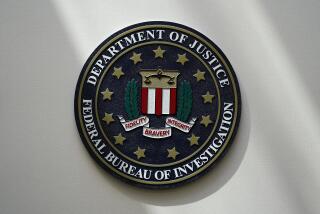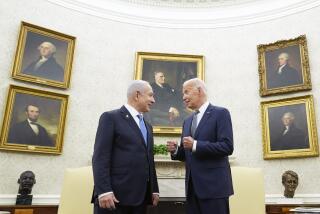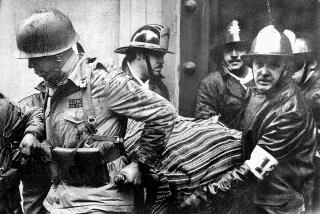U.S. Agencies Weighed Atomic Attack on China in 1950s : Secrets: CIA documents say weapons use could have shown Western determination in Korean War.
- Share via
WASHINGTON — U.S. intelligence agencies weighed seriously the possible impact of using nuclear weapons against China during the Korean War and after the French defeat in Indochina, according to newly declassified CIA files.
“If atomic weapons were used, the Communists would recognize the employment of these weapons as indicative of Western determination to carry the Korean War to a successful conclusion,” the CIA and other intelligence agencies concluded in June, 1953.
This dispassionate analysis of a possible U.S. nuclear attack is contained in a series of files that the CIA made public Thursday.
The release was the initial step in the agency’s effort to open up to historians and the American public a few of its archives from the early days of the Cold War.
Overall, the documents demonstrate that during the tense Cold War period of the late 1940s and early 1950s, American intelligence was sometimes prescient and sometimes wildly inaccurate.
The CIA was able to predict accurately Soviet behavior in the Middle East during the Suez Canal crisis of 1956.
Soviet officials had suggested that Moscow might intervene militarily in response to the invasion of Egypt by Israel, France and Britain. A hurried U.S. intelligence estimate concluded, correctly, that the Soviet Union would not attack Britain or France and would not send its forces to the Middle East.
Agency officials also suggested the possibility of a Sino-Soviet split several years before it occurred.
The study warned, however, that the Soviet Union and China would stick together through the period of the early 1950s--as in fact they did.
But American intelligence also had notable failures, the files show.
It failed to predict the outbreak of war in North Korea in a study completed just before the conflict began. The CIA said only that North Korean forces “have a capability for attaining limited objectives in short-term military operations against southern Korea.” The Pyongyang regime launched its devastatingly successful invasion of the south six days later, and the war lasted until 1953.
In the wildest miscalculation of all, the CIA gazed into its crystal ball in 1953 and hazarded a guess on the future course of the Cold War. In many ways, U.S. intelligence officials concluded, “time must be said to be on the Soviet side.”
“We believe that the Soviet Bloc under present policies and programs will over the next 10-15 years decrease the proportion by which its economic and technological capabilities are inferior to those of the West,” the CIA said.
As was often the case, that same intelligence report contained a qualifier. The study went on to caution, with greater accuracy, that “internal rigidity may deprive the U.S.S.R. of that flexibility and vitality which contribute to a political system’s survival and growth.”
Many of the newly declassified files are “national intelligence estimates,” in which U.S. intelligence agencies tried in the 1950s to reach a consensus on the intentions and capabilities of the Soviet Union and its allies in China and Eastern Europe.
The new materials, which will be opened to the public at the National Archives in Washington on Monday, include only the CIA’s analytic studies and not its records of clandestine or covert operations.
Last Tuesday, CIA Director R. James Woolsey announced that the CIA has decided to release information about six CIA covert operations from the 1940s to the 1960s. These will include clandestine U.S. intelligence operations in France, Italy, Indonesia, Tibet, Laos and North Korea.
The release of these files is part of the CIA’s effort to show that it is becoming less secretive now that the Cold War has ended. Most of these files will not be made public for at least two years.
More to Read
Sign up for Essential California
The most important California stories and recommendations in your inbox every morning.
You may occasionally receive promotional content from the Los Angeles Times.













